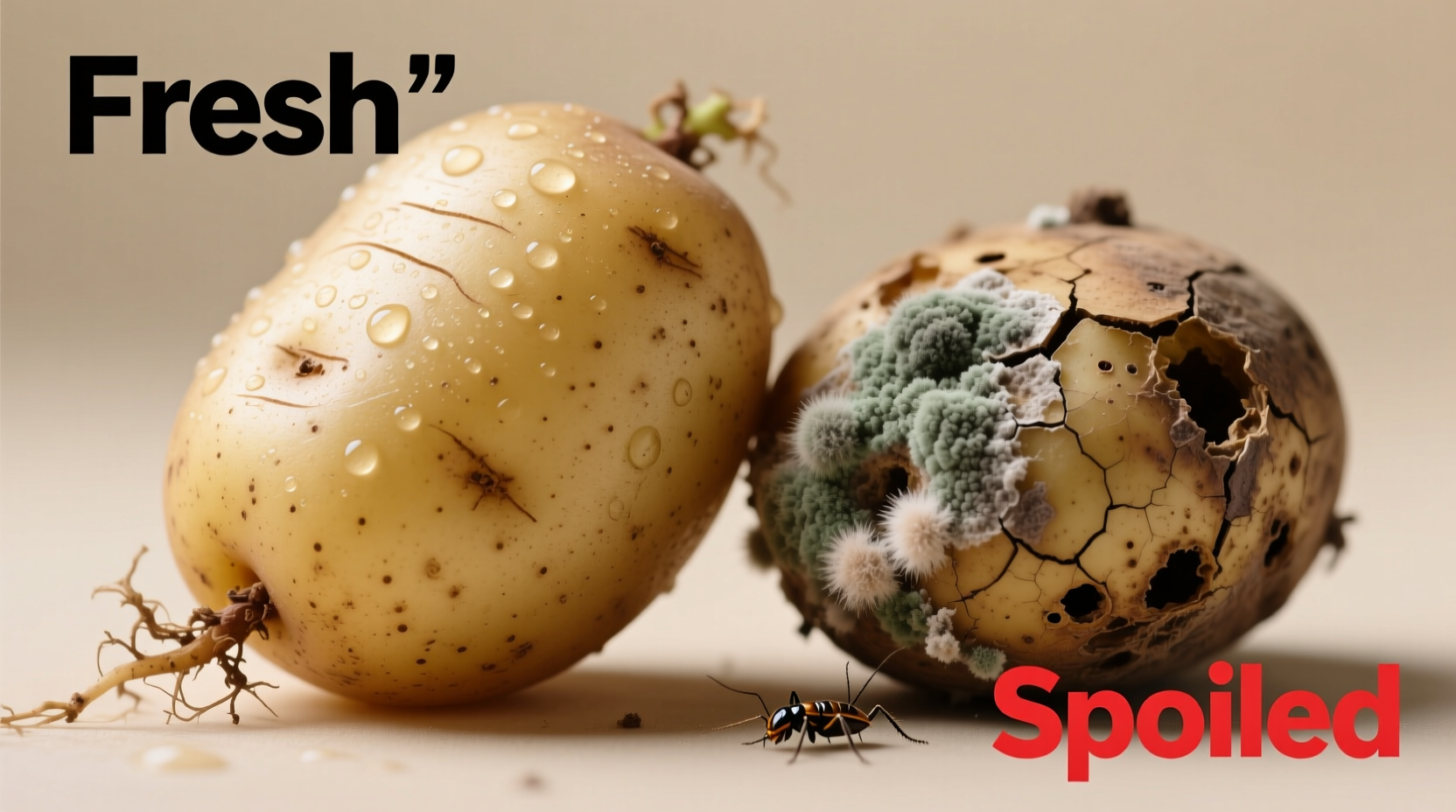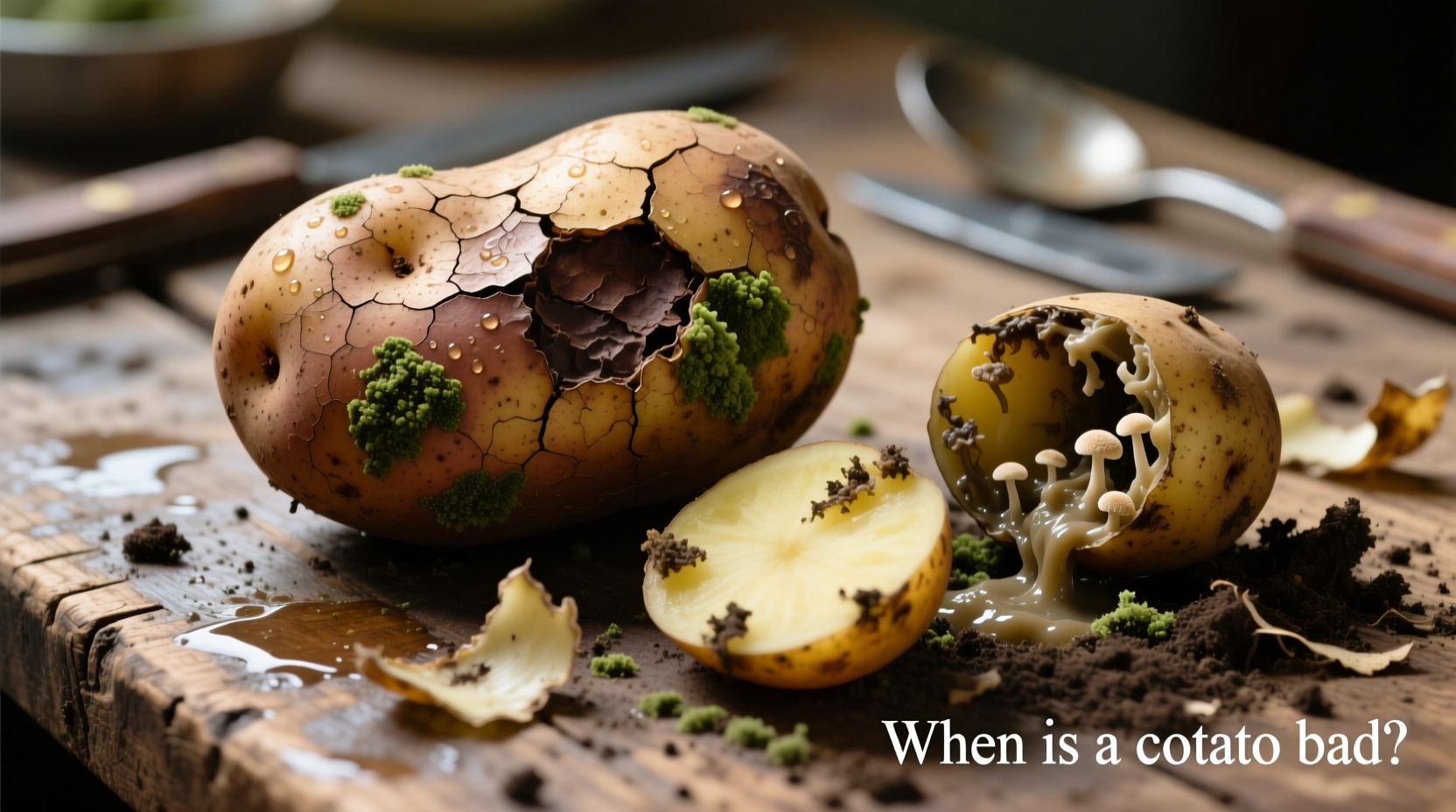Discovering spoiled potatoes in your pantry can lead to food waste and potential health risks. Understanding exactly when a potato has gone bad helps you make safe decisions while maximizing the shelf life of this versatile staple. This guide provides science-backed indicators to identify compromised potatoes before they make you sick.
How to Identify a Bad Potato: Visual and Tactile Clues
Recognizing spoiled potatoes requires examining multiple sensory indicators. Don't rely on just one sign—consider the complete picture before deciding whether to use or discard your potatoes.
| Condition | Safe to Eat? | Action Required |
|---|---|---|
| Firm texture, no sprouts, normal color | Yes | Store properly |
| Small sprouts (under 1 inch), firm | Yes (after proper preparation) | Remove sprouts and eyes |
| Green patches (any size) | No | Discard entire potato |
| Mushy or soft spots | No | Discard entire potato |
| Mold growth | No | Discard entire potato |
Timeline of Potato Spoilage: What Happens Over Time
Potatoes don't spoil overnight—they progress through predictable stages. Understanding this timeline helps you catch problems early:
- Days 1-7 (Optimal freshness): Potatoes maintain firm texture and normal color when stored properly
- Weeks 2-3 (Early deterioration): Small sprouts may appear; potatoes remain safe if firm
- Weeks 4-6 (Advanced spoilage): Significant sprouting, soft spots develop, potential green discoloration
- 6+ weeks (Unsafe): Mushy texture, mold growth, strong odor—definite discard
According to USDA food safety guidelines, properly stored potatoes typically remain fresh for 3-5 weeks. The University of Idaho Extension confirms that temperature fluctuations accelerate spoilage, with potatoes stored above 50°F (10°C) deteriorating significantly faster than those kept at ideal conditions.

Why Green Potatoes Are Dangerous
Green discoloration in potatoes indicates solanine production—a natural defense mechanism against sunlight exposure. Solanine is a toxic glycoalkaloid that can cause:
- Nausea and vomiting
- Headaches and dizziness
- Abdominal pain
- In severe cases, neurological symptoms
The FDA warns that cooking doesn't eliminate solanine, making green potatoes unsafe regardless of preparation method. Even small green patches warrant discarding the entire potato, as toxins may have spread internally beyond visible areas.
Proper Potato Storage: Maximizing Freshness
Extend your potatoes' shelf life with these evidence-based storage techniques:
- Store in a cool, dark place between 45-50°F (7-10°C)—never in the refrigerator
- Use breathable containers like paper bags or mesh sacks
- Keep away from onions, which release gases that accelerate sprouting
- Wash only immediately before use to prevent moisture-related spoilage
Research from the American Journal of Potato Research demonstrates that potatoes stored at room temperature spoil 40% faster than those kept in optimal cool, dark conditions. Proper storage can extend freshness by several weeks compared to improper methods.
When to Salvage vs. Discard: Practical Decision Guide
Not all imperfections mean automatic disposal. Use this decision framework:
- Safe to eat after preparation: Potatoes with small sprouts (under 1 inch) and firm texture—remove sprouts and eyes thoroughly
- Discard immediately: Any potatoes showing mushiness, mold, or green discoloration
- Use with caution: Potatoes with slight softness but no other signs—cook immediately and inspect carefully before consumption
Remember that potatoes with compromised integrity create ideal conditions for bacterial growth. When in doubt, throw it out—food safety should always take priority over reducing waste.
Common Questions About Potato Freshness
Understanding potato spoilage helps prevent foodborne illness while minimizing unnecessary waste. By recognizing the clear indicators of deterioration and following proper storage practices, you can safely enjoy this nutritious staple food.











 浙公网安备
33010002000092号
浙公网安备
33010002000092号 浙B2-20120091-4
浙B2-20120091-4